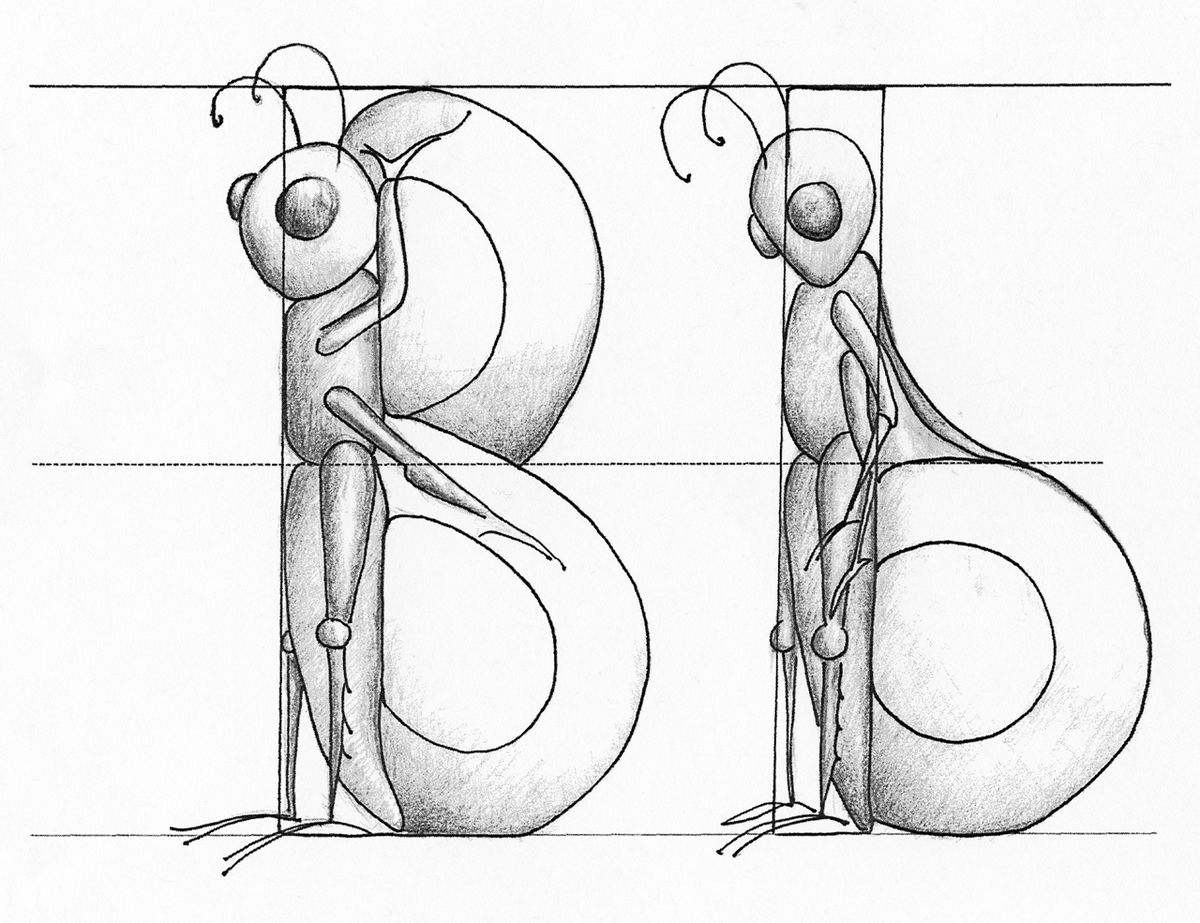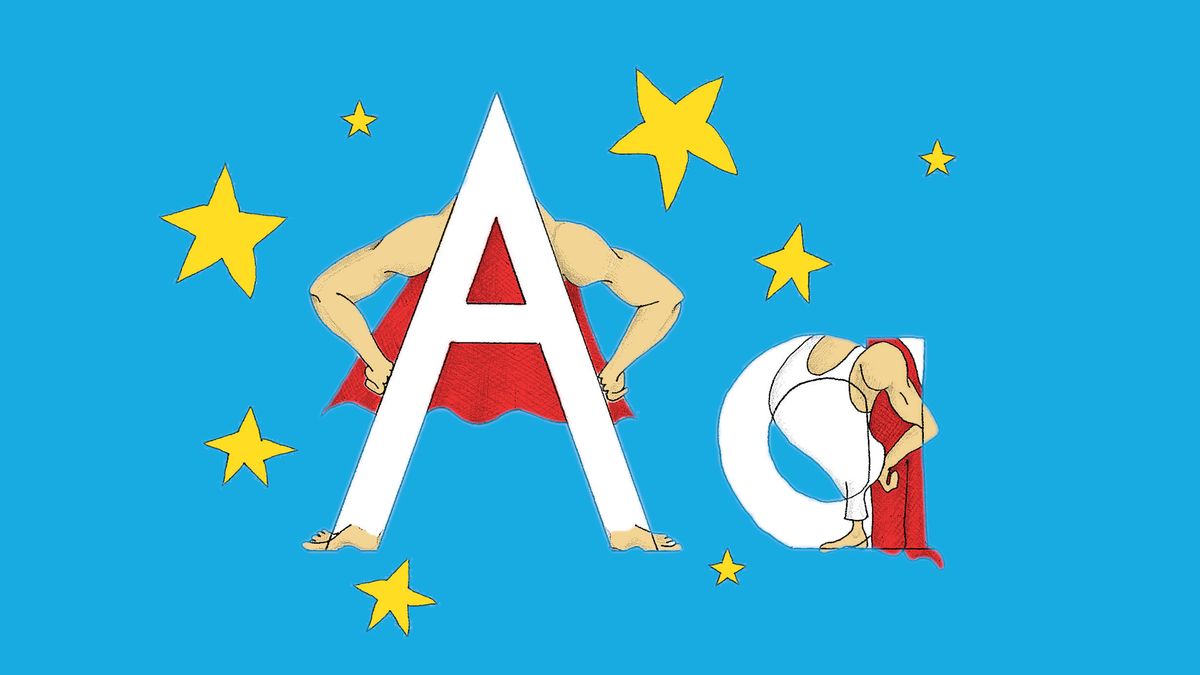Linking sight and sound: Regional tutor creates cartoon-like dyslexia learning program that’s going online
Think of the letter A as “admirable,” tutor LaVerne McGrath says, and the admirable A has a cape. (Courtesy illustration by LaVerne McGrath)
As a child with dyslexia, LaVerne McGrath created illustrations with stories to help her make sense of the alphabet.
With the learning disorder, McGrath struggled with letter sounds and reading. Dyslexia affects areas of the brain that process language and involves difficulty identifying how speech sounds relate to letters and words.
She said her school used memorization of sight words instead of phonic sounds, but neither approach helped her.
“I could short-term memory it, but later on, I didn’t have the skills to separate out sounds, so when I saw a word that was similar, like girl and grill, they looked the same to me,” she said.
“I didn’t know how to decode them. ‘A’ for apple didn’t make sense to me. There is no direct association from symbol to sound.”
McGrath said she’s creative and can see 3D in her mind for art, flipping an image, but she struggled with left-to-right direction for writing and reading. The connections for letters also escaped her, except for S.
“It did look like a snake, so I could remember the ‘S ‘sound for snake, but it didn’t help me with the direction in which ‘S’ is written. If you write it backwards, I couldn’t tell the difference.”
She was always artistic, so her mother suggested she create a creature for each letter and a story to go with it to explain its appearance and sound. That clicked.
McGrath, 59, as a young adult then began using her self-made ideas to tutor, while adding concepts over time, to create a program that’s helped hundreds of students with learning disorders or young readers get on a fast-track. Now, a new approach is likely to help even more kids.
McGrath, a former Spokane resident, is working this year from her Tri-Cities home with the Spokane Valley company Station Three Media to develop an online program using her techniques. It will include her illustrations and her vocals for the cartoon-like characters, storytelling, role playing, sing-song phrases and other tools.
The intended audiences include preschools, child care centers and home-schoolers.
To put her course materials into an online video format, Station Three Media’s film animation work will use McGrath’s original artwork while adding hand-drawn elements, colorizations, music, sound effects and editing.
“It’s designed to overcome many learning obstacles, even dyslexia, by intertwining special tools and techniques to purposely activate the long-term memory processes,” McGrath said. “Instead of just teaching basic literacy skills, it also teaches kids how to learn. It’s just fun, fast and effective.”
She’s used the material typically to tutor children between ages 3 and 9, but she’s helped older students, too.
Dyslexia affects 20% of the population and represents 80%-90% of all those with learning disabilities, says the Yale Center for Dyslexia & Creativity. The disorder often runs in families.
Work is still underway to create full online content for McGrath’s program, but initial videos are online at mcgrathliteracy.com. McGrath said her four-part curriculum starts with “Making Sense of the Alphabet.”
As an example of how she helps kids with letters, McGrath returned to the description of ‘S.’ It’s still a snake, because that makes sense, but takes on a fun twist.
“She’s not just a snake; she’s a shy snake,” she said. “She always keeps her head in the back. So, ‘Head in the back, body in the front, there’s her tail.” It’s a phrase McGrath repeats in a rhythmic, sing-song manner.
“They’re also getting that directionality and understanding, so there are writing cues, as well. Now you can look at the letter and see it’s a snake. There is a direct association from symbol to sound, but if you analyze it further and put in emotions, she always keeps her head to the back because she’s shy. Now, you have a reasoning.”
“You can then analyze why the letters look the way they do. The students are analyzing, not memorizing.”
She also refers to the letter “A” as “admirable.” McGrath said although that might be a big word, she explains a meaning that children quickly grasp. Plus, the admirable “A” has a cape, especially helpful for the little guy.
“If ‘A’ puts his cape in the front of him, he won’t be able to see. That’s why he keeps his cape in the back. It gives them a way to be able to analyze directionality in the letters and in the reading and writing sequence.
“When you role play it out with children and have all these things intertwined, with the activities, it’s all part of the whole system. It’s cartoon logic. It’s fun logic.”
Her program includes direct association from symbol to sound, directional guidance, tools to separate names from sounds and a way to put capital and small letters in family units.
“Basically, it’s a four-part curriculum. It’s designed to overcome many learning obstacles, even dyslexia, by intertwining special tools and techniques to purposely activate the long-term memory processes. In other words, instead of just teaching basic literacy skills, it also teaches kids how to learn. It’s just fun, fast and effective.”
Years ago, McGrath partnered with a Spokane tutoring center where she taught the program to expand its reach. But the training of other tutors proved to be extensive, she said.
“Not only did the tutors have to remember the stories and how to be a dynamic storyteller, there were songs and all kinds of intertwining of different modalities,” said McGrath, who later worked for Next IT as an instructional designer.
“The way we’re setting it up now, it’s more material-driven, not instructor-driven.”
McM Literacy has raised seed money from an October Kickstarter campaign. While still seeking financial backing, more content is being developed, McGrath said.
As material is produced, McGrath plans to offer a hybrid of free and purchased materials. She plans to sell books through Amazon, including “The Bird Beak Pinch” for holding a pencil, with a free extra.
In graduate studies, McGrath researched why her approach works and how it helps long-term memory.
“I was fascinated by how much long-term memories are created when you are doing storytelling, adding bizarre imagery, using emotions empathetically and using the rhythmic.”
Now, the online content will combine all her ideas. “With children I’ve come across, it’s worked over and over.”
“I tell them, ‘Let me show you your special powers.’ ”


